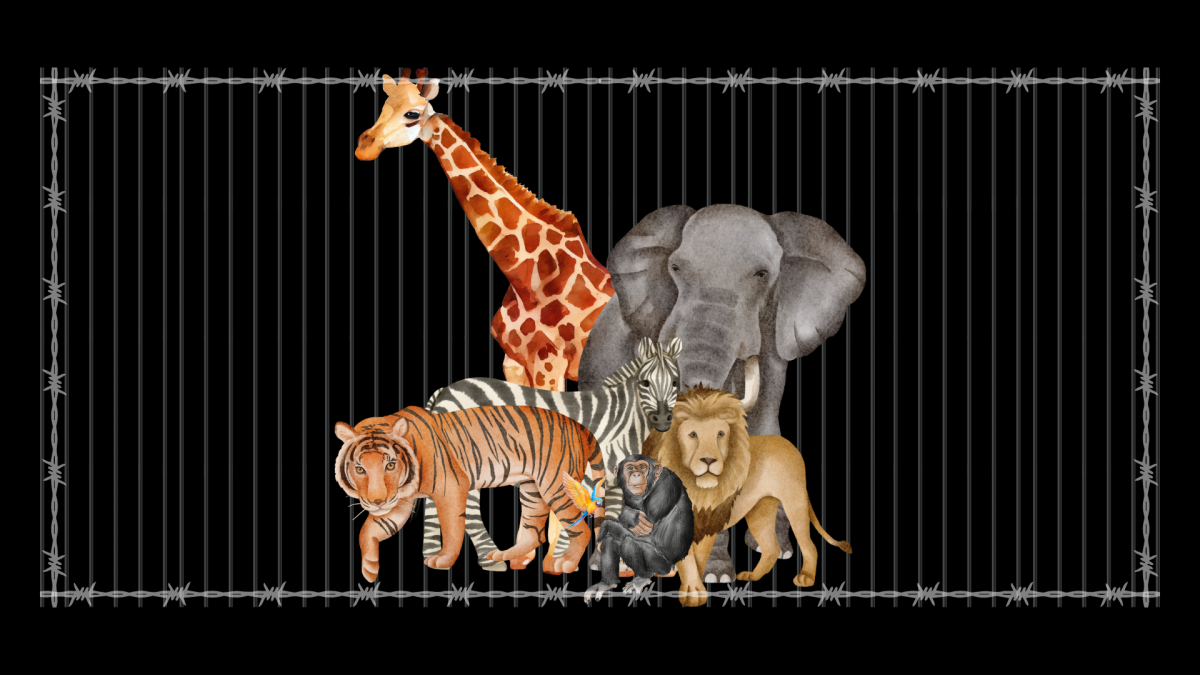Chimpanzees, one of humans’ closest relatives, require around 12 square miles to live in the forest. Chimps who live in the desert require more space. The average enclosure for a chimp is only around 250 sq. feet, according to ZooChat.
The average American house is around 2.350 square feet. If the same logic were applied, it would be as if your house were only 1.128 square inches.
Animals that are domesticated are bred and genetically changed to be able to live with humans. It is okay for animals like domestic dogs, cats, hamsters and guinea pigs to live in a smaller enclosure. It is not, however, okay for a wild animal to live in a tiny enclosure, somewhere they are not meant to be.
According to World Animal Protection (WAP), tigers’ roaming space can be quite variable, ranging from as small as five square miles to 60 square miles, but the average enclosure is only 11,500 square feet (0.0004 square miles), according to ZooChat.
If someone went to a zoo and closely observed enclosures, they could see that the animals are distressed. Parrots pull out their feathers, tigers pace back and forth endlessly and polar bears swim in circles.
Zoochosis is a psychological condition similar to psychosis in humans, which is when a person loses touch with reality and cannot tell what is real and what is a hallucination. Animals can get this too when their needs are not being met.
According to In Defense of Animals (IDA), some symptoms of zoochosis in animals are: pacing, bar biting, bobbing, weaving, swaying, rocking, self-mutilation, over-grooming—such as parrots pulling out feathers or chewing skin–regurgitating and re-ingesting food.
Also according to the IDA, many zoos need to give animals antidepressants or antipsychotic medications to manage symptoms.
Zoos do not allow animals to live their lives instinctually, or as they are designed to live based on their species. Humans choose for themselves how animals live, like which animal they live with in captivity, who they mate with or even allow them to mate. They cannot hunt for food or eat when they are actually hungry, as they are fed on a schedule. This is very different from the wild, where animals make their own choices.
In the wild, animals can choose to live alone or to live in a group, and which group they want to live in, depending on the species. They can roam and eat wherever they want, whenever they want. Wild animals are meant to be wild.
Some may think that it is better for wild animals to live in captivity because they do not have to hunt for food and they do not have to live in the wild. This is both inconsiderate and ignorant, because these people think that animals would like to live the same way humans do, or how domesticated pets do.
Wild animals are not the same as humans or pets. They are meant to live in the wild. They are meant to find their own food. It is not cruel to let a wild animal be wild; it is letting them be as they are meant to be.



